Budayaw-ing:
(Identity to Narrow Gaps):
Preserving Cultural Diversity to Narrow the Development Gaps in BIMP-EAGA, A Synthesis of the Budayaw 2017 Colloquium
A. Introduction: 50 Years of ASEAN, 27 years of BIMP-EAGA, Three Days of Dialogue
In the heart of the Eastern Hemisphere of this earth is a rich giant wrapped in a tapestry of wealth and colors. This giant emerges like a sleeping dragon to spew its might and send sparks of shining jewels to the world. These sparks are the shining fragments of interdependent cultures. Each culture is self- contained, beautiful and self-determining. This is Southeast Asia, diverse in culture, but unified in direction. The story of this unity started not so long ago.
On 8 August 1967, the Association of Southeast Asian Nations (ASEAN) was formed to unite the region through a system of regional cooperation with current members Cambodia, Brunei-Darussalam, Indonesia, Lao People’s Democratic Republic, Malaysia, Myanmar, Philippines, Singapore, Thailand and Vietnam.
In 1978, ASEAN formed the Committee on Culture and Information. Its vision on 2020 was that the ASEAN member countries would have a regional community aware of the regional identity and shared history.
In 1994, the ASEAN economic sub- group area consisting of four member countries formed the BIMP-EAGA (Brunei Darussalam- Indonesia-Malaysia-Philippines East ASEAN Growth Area). Its rationale was to narrow the development gaps between and among these focus areas. Furthermore, this rationale was expanded into a vision to make BIMP-EAGA RISE (Resilient, Inclusive, Sustainable and Economically) Competitive.
In 2001, Southeast Asian art and culture was finally written into a textbook by Southeast Asian scholars themselves. This is a total of 33 years after the ASEAN committee on culture and information was founded. In this book’s introduction, it recognizes that “Southeast Asia is an important and dynamic region of Asia that draws international interest due to the richness and diversity of its cultures.”
In 2015, BIMP-EAGA formed the Socio-Cultural and Education pillar to recognize the long history of socio-cultural ties among the member countries to serve as the foundation of the regional economic cooperation. Revitalizing socio-cultural relations becomes a necessary element of the sub-region’s development initiative, more so in sustaining these.
From 21 to 23 September 2017, BIMP- EAGA held its first Budayaw: Festival of Cultures, fifty years after the founding of ASEAN. Philippines hosted the first Budayaw Festival. One of the major activities of the festival was the Budayaw Colloquium. Budayaw is a harvest of golden memories of the regional association and cooperation.

ASEAN, however, faces a dilemma of truth whether an article by a writer who was quoted in Joyce Toh’s paper that “Southeast Asia was more real in the west than in Southeast Asia itself.” Rather than react, this should be a continuing challenge to every ASEAN member and most especially to a resident of BIMP- EAGA.
In a survey of 2,400 respondents from ASEAN countries conducted by JWalter Thompson (JWT) Co. in July 2013, almost half of the respondents say they strongly identify themselves as Southeast Asian. There is indeed another half to reach out to and feel that there is an emerging community called ASEAN.
The Budayaw Colloquium of September 2017 being an academic conference yielded thoughts and challenges that the participants learned from the battery of speakers coming from the different ASEAN intellectuals. More than 600 participants, mostly students and teachers, joined in the discussions within a total of nine hours spread in three days.
This is a synthesis of that colloquium. The great hearts and minds of the speakers, reactors and floor discussants served as the crucible from where the thoughts emerged as shining jewels of wisdom.
Borrowing the visions of the founding leaders of BIMP-EAGA, this article adopts the title “Narrowing the Development Gaps” among the four countries. This was the rationale that brought these four countries together. Since cultural diversity is among the strongest resources of this region, then this article harnesses cultural diversity as a driver to narrow these gaps.
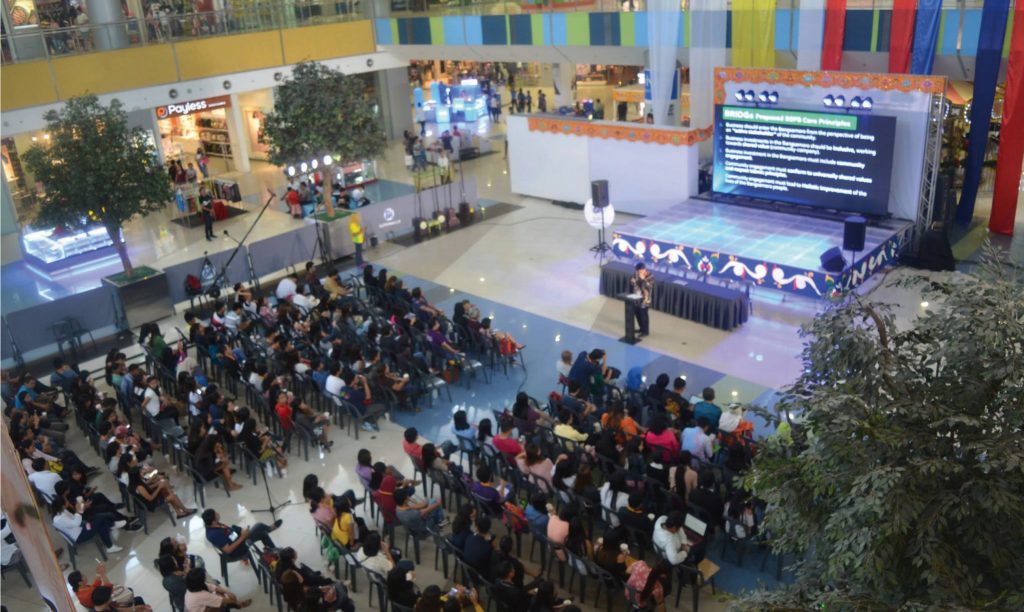
B. The Gaps That Needed to be Narrowed
Connectivity
The entire BIMP-EAGA comprises a population of approximately seventy million and a land area of 1.6 million hectares. The entire area comprises of approximately 2,000 kilometers of coastlines and thousands of islands. Due to the nature of this geography, among the challenges that the area faces is that of connectivity in many forms. Connectivity among islands, connectivity from islands to capital, connectivity from capital to capital. Take this example of travel by Dr. Ashar Bin Othman from Labuan to General Santos City, taking more than 48 hours using land, sea, air transport:
“For me to come here, I have to take a ferry from Labuan to Brunei and then a day before yesterday, in the middle of the night I had to fly to Manila. Then yesterday in the morning I have a flight from Manila to GenSan. So, I arrived here about six o’clock in the morning yesterday.
Weakening of a Sense of Community
Professor Felipe de Leon, Jr. opened his paper with Nusantao or Nusantara, meaning the creative diversity of the cultures of archipelagic Southeast Asia. One of the basic factors characterizing Nusantara is the “infusion of everyday life, phenomena and activities with sacred values, integration of uses and functions in everyday objects and non compartmentalization of human faculties.”
Another challenge that contributes to development gaps is, according to Prof. Felipe de Leon, Jr., the weakening of the sense of community brought about by the contemporary educational system. This educational system is promoted by globalization that is in turn a by-product of the industrial revolution in the eighteenth century. Furthermore, this results in a diminution of the sense of self. That the most highly specialized ones will have widely divergent assumptions, values and technical jargon and shall find it difficult to communicate with one another.
Prof. De Leon further added that the “economistic imperative prevailing in the region today effectively undermines cultural creativity for it conditions and even limits cultural production to that which is marketable and quantifiable. In general, there is a devaluing of intangible and spiritual qualities such as character, sense of honor and dignity, integrity, sincerity, moral excellence, inner virtues, spiritual love, wisdom and creative imagination in favor of wealth, consumerism, possessions, power, an industrial work ethic, conformity, efficiency, mass production and mass entertainment.” 8

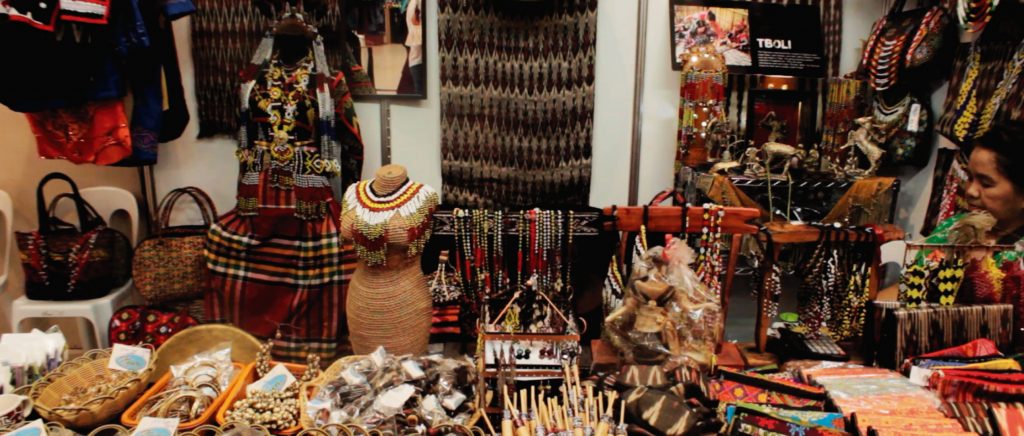
Wealth of Materials, Limited Ways to Understand
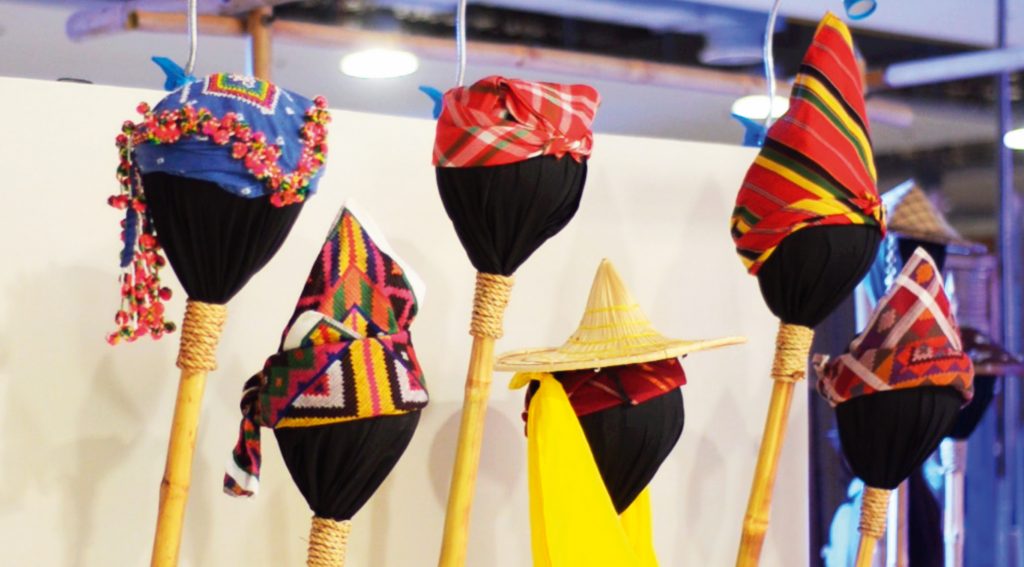
Dominance of the Culture of Those in the Center of Power
It is unfortunate that the culture of people far from the center of power are marginalized 11, says Dr. Abhoud Syed M. Linga from the Institute of Bangsamoro Studies. There is a tendency for the culture of the center of power to dominate in any society. This paves the way for adversities of culture. A clash between the dominant culture versus the marginalized culture. A consumerist culture emanating from outside the region tends to influence the cultures of BIMP-EAGA. Thus echoes the same premise forwarded by Professor De Leon that challenges the indigenous intelligence. The challenge, therefore, brings in too many fronts—between cultures of peers, between the dominant and the marginalized, and between the external and the multiple internal peer cultures.
As a reiteration of this culture of dominance, Joyce Toh, in the paper she presented, declared that the earlier maps of Southeast Asia were drawn by colonizers. Naturally, as they drew the line and boundaries, they also decided which to include and which to exclude. Thus follows the politics of representation. Understanding this challenge may yet be a beacon in the road to peace. In looking at Southeast Asia, the question therefore is by whom and for whom? Toh in her paper went on the intent to look beyond what are only in the metropolitan area, and to penetrate the farthest from the center.
This challenge needs champions, allies and financing. This is a new brand of cultural work in the region. Complex, competing, but if harnessed well, becomes enriching says Dr. Linga.
Synchronizing Business Culture with Societies’ Cultures
The idea of business in the tradition of BIMP-EAGA was characterized by barter trades and small and micro-enterprises. The onset of big business enterprises with main branches from the centers of economic powers is a phenomenon that brings with it a culture of efficiencies. This business culture that is supported by mainstream education is what Professor De Leon characterized as “fragmentation of lives, compartmentalized work, where there is no sense of belonging among workers.” This is where this gap offers a challenge.
In BIMP-EAGA sit top economic enterprises like the top corn starch milling company in ASEAN as well as World Heritage sites. The region is home to the world’s two biggest tropical rainforests,12 a rich source of agriculture and fisheries, minerals and non- mineral products as well as a halal hub. Among its top offers are its natural, cultural, historical and heritage sites which are magnets for a robust tourism industry. Running these businesses need successful investment practices. Successful businesses are anchored on society’s culture to determine the rules that govern how business firms operate. 13
The multiplicity of culture also includes the complexity of creating a business culture built on trust and confidence with local leaders,14 continues Ishak V. Mastura. This paper further shared a result of a survey in 2013 wherein the shared values in the region among those that stood out were “respect for tradition,” “warmth of the people,” “family orientation,” “respect for the aged,” and “love of religion,” all ranked high. (www.jwt.com).
A business that expands its own borders is another challenge that emerges as it would mean another set of multiple culture. How to adjust their cultural practices, values and standards that are acceptable to the local and to the staff. At times, cultural differences creates ethical problems. What is acceptable in one culture may not be acceptable in another culture, Mastura continues.
C. A Narrowed Gap in BIMP EAGA by Harnessing its Cultural Diversity
Taking Stock of the BIMP-EAGA Natural and Cultural Resources, its Potentials
The earth’s richest marine and terrestrial biodiversity are found in the Coral Triangle 15 and the forests of Borneo, Malaysia, and Papua in Indonesia. In addition to these are the hundreds of ethno-linguistic groups spread in the ten major islands and to build the future and the civilization of the nation,” according to a paper by Dr. Retno Raswaty. 16 UNESCO also declared that “multiculturalism will become the strength of control in the 21st century, a creative power that will bring wisdom which will change and form the international system.” 17 There is substance provinces of the four countries that formed BIMP-EAGA. These ethno-linguistic groups possess rich indigenous knowledge systems and practices (IKSP) that remain unwritten and unpublished, says Prof. Non in his paper.
The Republic of Indonesia’s constitution declares, “To make culture as the investment to these declarations. For one, an inventory of a number of Natural and Cultural Assets in the region names a few of the best of the world, as stated above.
Therefore, one can say with authority that all of the sixty to seventy million people of BIMP-EAGA are heirs to a very rich natural and cultural resource and heritage.
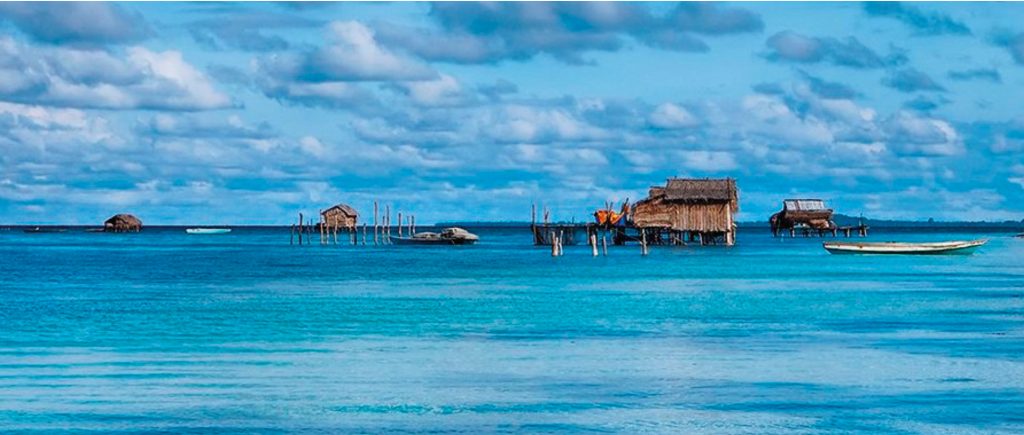
Clear Identity and Dignity Among Locals
One Filipino poet said, “Ang hindi lumingon sa pinanggalingan ay hindi makararating sa paroroonan.” (One who does not look back to ones’ past cannot reach his/ her destination) Applying this to the richness of the BIMP-EAGA cultural and natural assets, a local has to realize this land’s history and of the peoples. Prof. Non discussed about a lot of stories that remain unwritten and unpublished, and stay in settlements. There are indigenous knowledge systems and practices that are unrecorded, with the influx of outside influences brought about by mainstream formal education and by trade and business expansions. As global businesses and/or brands establish branches in the region, the locals need to stand with pride defending and bannering the local intelligence and wisdom.
Dr. Linga proposed a process to enrich each other’s culture in dealing with cultural differences. This way, the difference does not compete and destroy, but rather makes one celebrate the similarities as well as the difference.
In addition, a center-periphery influence of culture shall also be put into perspective. Elpidio Peria, a panel-reactor at the Budayaw Colloquium, posed a question: Whether folk art is considered as some kind of lower art? If so, what does it make of the concept of equality? Who rules in culture? Who prevails? This writer says, one who takes pride in his/her culture and expresses it with dignity rules.
Interdependent Roles of Government and Business as Cultural Champions
When BIMP-EAGA was established, it adopted a public-private approach to development, with the private sector serving as the engine of growth and the public sector taking on an enabling role. While the private sector was not given much time to present during this colloquium, Linga in his paper believed that the business sector have the resources to spend for and promote culture and arts. They can also provide same resources for the preservation of culture and arts. In so doing, the challenge is how to generate money from the promotion and safeguarding of culture and arts. This is so because the resources that business shall use shall have to be earned by the same entity. Linga showed the success of the batik culture, having achieved a billion dollar industry without being bastardized.
Government, on the other, has to provide the regulations and efficient enforcement of these regulations to protect and safeguard the “bastardization” of the culture and arts that are promoted. Two paper presentations were very clear with government actions to do this. These were:
Brunei’s example: A clear national culture policy. The Brunei-Darussalam experience shared by Haji Mohammad Abdoh Syed Bin Haji Awang Damit. The law was drafted in 1991 and signed into law in 2015. Before the national culture policy became a law, it was already rooted in centuries of practice and tradition. In the national culture policy, culture is Malay, religion is Islam and political system is monarchy. This is also the national identity. This clarity makes it easier for the country to interact with external ideologies or other cultures.
Indonesia’s example: Enacting a law, Regulation No. 5/2017, on the promotion of cultural diversity and Bhinneka Tunggal Ika 18 in Indonesia. This regulation has the following characteristics: (a) tolerance and diversity, (b) participatory, (c) benefits, (d) sustainability, and (e) freedom of expression.
At the open forum, one participant asked Mastura, representing the board of investment of government as to what are the programs that the government is initiating in developing culture as engine of growth in business in the Autonomous Region in Muslim Mindanao (ARMM). In response, Mastura put emphasis on “culture drives business,” meaning embed culture into business such that the business itself adopts the culture. One example: The good lawyer gave is the Japanese culture of incremental improvement of a product as applied in “just in time” (JIT) practice of inventory management. This culture was adopted by a firm and is adopted globally.
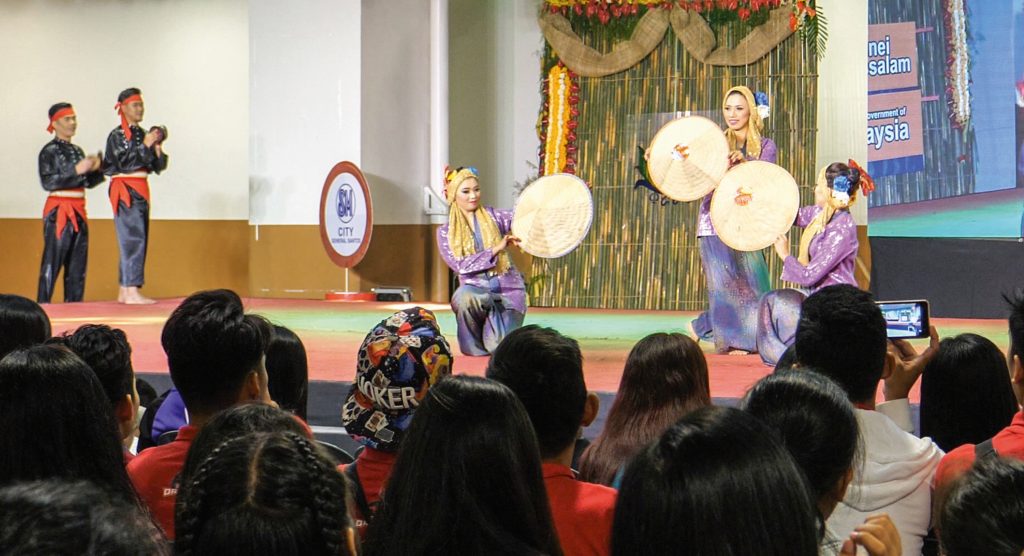
Speaking Through the Language of Art
One of the challenges of cultural diversity is the multiplicity of languages. Vocabularies, syntax, structures, nuances are distinct and belong to a particular culture. How to effectively transmit messages necessitates use of a language that all cultures can effectively transmit and receive messages being exchanged. However, there is one language that transcends all these languages and has the universal appeal. These are the different forms of art.
D. Cultural Exchange, A First Step to Narrowing these Gaps through Cultural Diversity
Thus, the Budayaw Festival becomes the bridge and the connectivity of these islands in paradise. The festival of cultures is the seed and model of cultural exchange.
During the parade of cultures, a spectator was overheard saying, “Parehas ra nato og hitsura, lahi lang ang costume (They look like us but just wear a different costume).” The performances and interactions in the performance venues as well as in the different communities were concrete experiences of cultural exchange. Both performers and spectators celebrated together the similarities of aspects of each others’ culture, at the same time celebrated and enriched understanding of each other through the differences. For this cultural exchange to work and to protect the natural and cultural heritage in this exchange, there are some elements that need to be addressed. These are:
First, clear understanding of national identity or of local culture in order for it to withstand the effect and influence of another culture. Governments as guardians of culture shall provide the environment to ensure that citizens stand proud of their local traditions, practices and heritage. This includes protection, safeguarding and conservation of the rich national and cultural resources of the local.
Second, the business sector needs to generate revenues in the cultural exchange so that it shall contribute to the promotion and conservation of culture. Government alone cannot raise all the needed resources in the cultural exchange. The business or the private sector is recognized by BIMP-EAGA as a driver for growth. Earning revenue through cultural exchanges shall surely invite the private sector to be guardians of culture in addition to government.
Third, the sending and receiving communities should benefit quantifiable educational results through the experience. The experience needs to add pride and more appreciation of local culture and identity. The experience needs to add more knowledge, skills and understanding of a regional identity and unity. Thus, the exchange shall further deepen and enrich local culture and arts.
Fourth, the cultural exchange shall contribute to the strategic goals of BIMP-EAGA vision. This cultural exchange may enhance the development of additional products and services according to the strategic industries identified by the region and contribute to its development.
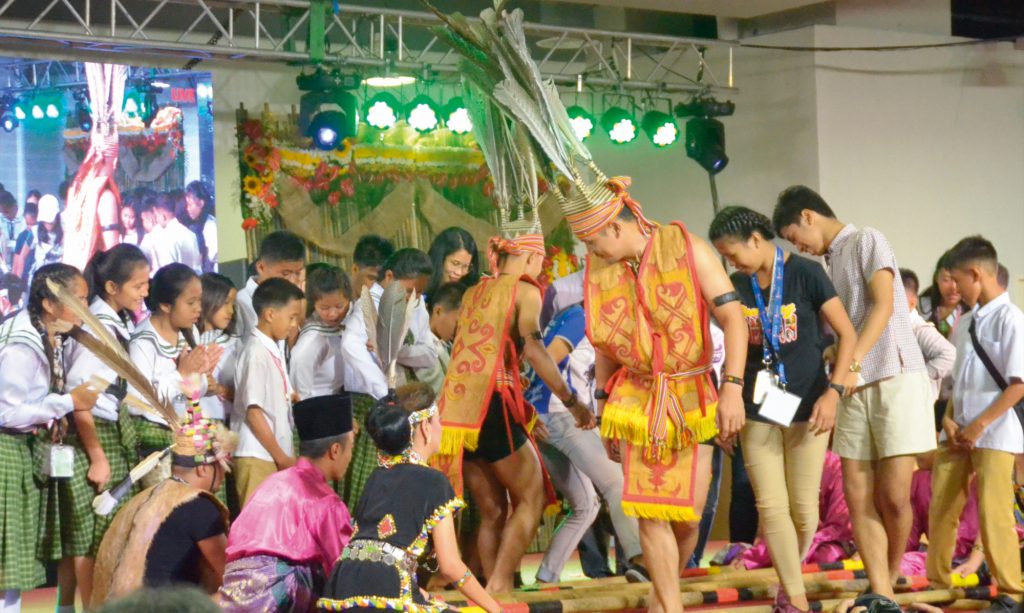
E. In Conclusion and an Afterthought for the Reader
Budayaw is a continuation of what the visionaries who launched BIMP-EAGA fifty years ago envisioned. As the core competency of the region is in its cultural diversity, so thus cultural approach will be the best vehicle to sail these islands to its RISE strategy. Mastura so eloquently declared in his paper at the colloquium. However, culture is a mutually exclusive relationship between human and nature. This relationship cannot stand on its own without deeper understanding by humans and without proper respect from humans. Nature is just there, awaiting human’s loving embrace and nurturing. In another light, nature can very well be defaced by human’s destructive behaviors.
Hence, the champions of culture carry the baton of responsibility to orchestrate society. In details, one can learn from a 2009 Nobel Prize co-winner in economics in her body of works, among them, The Eight Design Principles of Common Pool Resource Management. Surely, the guardians of culture and of the earth follow sustainable ecosystem principles in the region. Otherwise, the very wealth that the seventy million people sit on shall be destroyed in a matter of years by an economic agenda that forgets this fragile nature of cultural biodiversity. All speakers warned everyone of this eventuality and even present seeds of impending dangers that these are imminent.
For the students and scholars in the region, there are still so many undocumented stories, practices and indigenous systems that await your scholarly eyes to capture and document.
For artists in the region, the stories, lore, colors, movements, music, rhythms, heroes and histories are ripe to be harvested, celebrated and presented to ourselves and the world. Art is unquestionably the language that mitigates problems of connectivity and community, for this is the language that transcends whenever other forms of communication fail.
For universities, open and encourage students and scholars to direct their researches and search for knowledge to further understand the history, the richness of the cultures of BIMP-EAGA and further seek evidences of commonalities that lead us to common identity and appreciation of shared histories. Furthermore, to ground sciences with indigenous practices, technology with grass-root practices, natural sciences with the deeper understanding of the cultural value of natural and cultural heritages beyond monetary units.
For business people, to accommodate local culture without blindly instilling solely the assembly-line efficiency of the West. Furthermore, to initiate a business culture that is sensitive to the local culture characterized by egalitarianism, respect for each other and acting as a community of caring people. For business people to build that new culture that combine local culture with efficiency, effectiveness and equity goals. In addition, Linga clearly identified the role of business to contribute to funding cultural events and programs. This however also presupposes that the business sector can earn revenues from these cultural programs. This further engages the artists and cultural workers to ensure that the business establishments gain from their cultural works and cultural actions so that the business sector shall invest in culture and cultural programs.
For government to be a learner as a regulator, a purchaser of and a provider of services at the same time. Let us spell out what we mean with all these functions. Government becomes a learner when it listens to nature and the people who are close to nature before they draft laws, regulations, policies and programs. Once regulations are drawn, it is important that government enforces these regulations without fear or favor. As purchaser of services, government shall accept that it does not have all the capacity to provide all services. Thus government buys services of experts in order to help in its effective functioning. As provider of services, government entrusts to its agencies tasks that support cultural diversity and ensures that these agencies perform the tasks assigned to them.
For non-government organizations (NGO) and people’s organizations to be the organized channels of the people to frame their visions and their actions. If needed, these NGOs shall bridge people’s visions and actions with government. Government may outsource some of its service functions to NGOs if the need becomes apparent.
For the Budayaw secretariat, to baseline all those discussed in this colloquium and transform the four recommendations of the colloquium into indicators for future Budayaw Festivals. For a start, the four countries may make an inventory of the following:
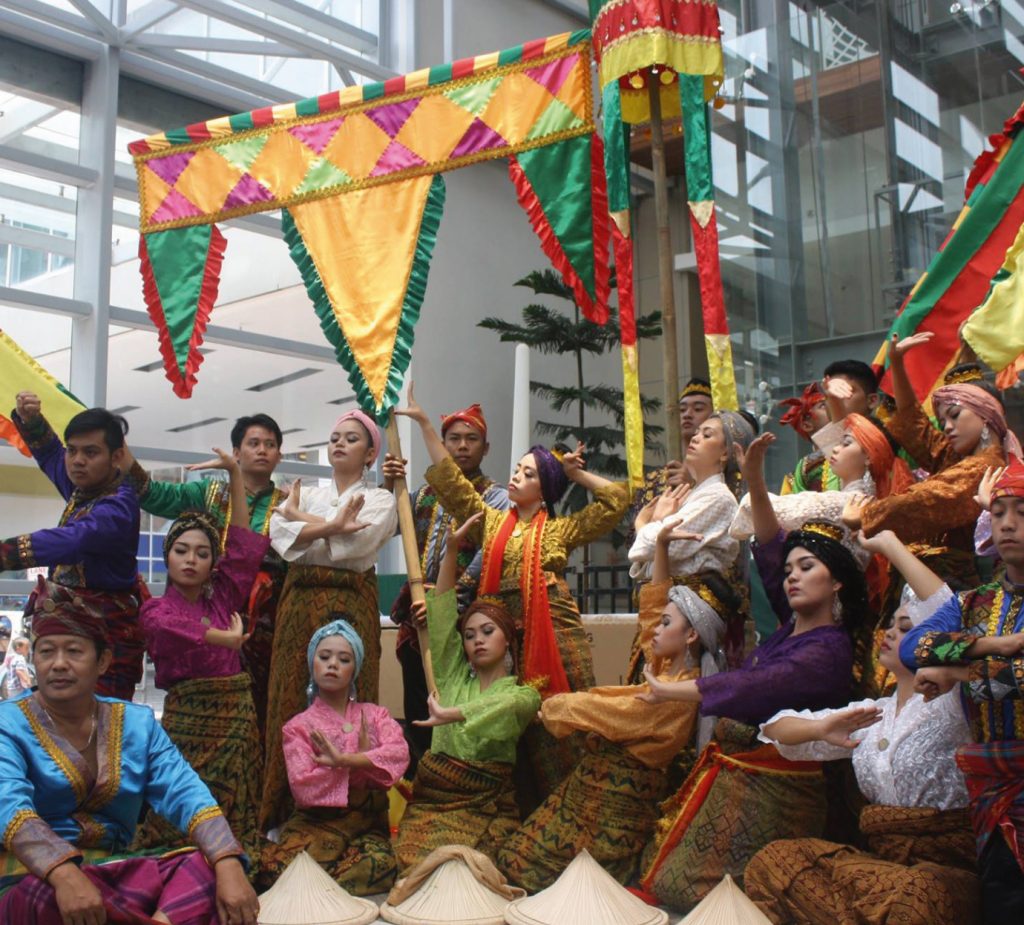
Recommendation 1:
National Identity is enhanced versus eroded
- National Cultural Policy in each country
- Number of and ethnographies of ethno-linguistic groups in each country
- Cultural mapping of each province, municipality and villages
- Publication of descriptions of local aesthetics
Recommendation 2:
Business sector earns revenue
- Projections and realization of costs and revenues of each cultural exchange
- Cultural accounts, sources of funds and how funds were used This way, contributions into the cultural kitty shall be accounted for Government tax earning and tax foregone
Recommendation 3:
Educational and economic benefits of sending and visited community.
- Before and after quantification of participants’ knowledge and appreciation of one’s culture and that of BIMP-EAGA
- Noticeable enrichment of local visited culture and of visiting groups • Bilateral exchanges between visiting and visited groups
Recommendation 4:
Direct contribution to strategic sector of BIMP-EAGA
- New eco-tourism package developed and utilization
- Environment protection
- Indigenous, sustainable and eco-friendly food production • Connectivity and fostering commonality and unity Finally, the next colloquium may zoom into unearthing the unpublished indigenous practices and knowledge systems that need to be celebrated. If there are cultural mappings in each country, the colloquium can drumbeat these initiatives, say, celebrating indigenous heroes.
